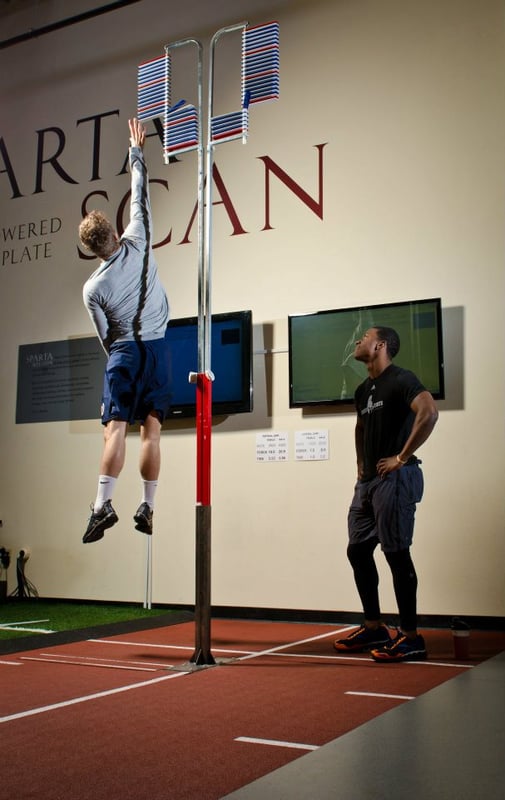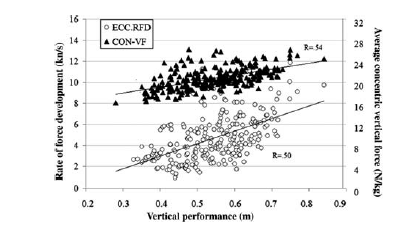
We write frequently about the importance of validity when testing or evaluating athletes.
The take home message: Make sure what you’re measuring matters. In this post we’re going to continue to examine the keys to a successful athletic test.
At SPARTA we work with all kinds of athletes (Baseball, Basketball, Football, Hockey, Water Polo, etc.) but we test and evaluate them all in exactly the same way. The Movement Signature is based on our scan comprised of 6 vertical jumps performed on a force plate. If proficiency (skill) at the vertical jump caused an inconsistent change in the variables of the movement signature (LOAD, EXPLODE and DRIVE) we would be in trouble. Basketball players would then have an unfair advantage over water polo player because they are more skilled jumpers to begin with. Part of the reason we chose vertical jump as our performance measure is that we felt it reduced the amount of skill needed to perform the test. Limiting skill is one of the keys to having a reliable test and we’re going to explain why.
Homoscedastic is a term that’s hard to pronounce but crucial to any significant performance measurement. In statistics, a sequence of random variables is homoscedastic if all variables in the sequence have the same finite variance. This is a complicated way of saying that you’re random variables are homoscedastic if they don’t fall too far away from the mean (expected value). In our case, the random variables are LOAD, EXPLODE and DRIVE. The reason we want to know that they are homoscedastic is that it will tell us if skilled vertical jumpers have an unfair advantage in our test. The figure on the right is from a paper we published in 2013 (PubMed). It shows how eccentric rate of force development (LOAD) and average concentric force (DRIVE) change as vertical jump height increases. DRIVE is represented by the black triangles and LOAD is represented by the white circles. The mean (average) is represented by the line running through the middle of the plotted points. What we see (and what we want to see) is that as jump height increases the points don’t scatter too far from the mean. This means that getting better at jumping (higher) doesn’t make you a better force producer, and therefore give you an unfair advantage in the SPARTAScan. If it did, you would see the points scatter further from the mean as the jump height increases.

For us, this means that vertical jump (and the Movement Signature™ we produce from it) is just as reliable a measure for a basketball player as it is for a water polo player. The key to changing your signature is not jumping higher, but changing the way you move. We do that in our training sessions through a combination of strength, skill and regeneration movements.
If an an athletic evaluation naturally favors a group of athletes over another, it can be very detrimental to the disadvantaged athletes. They risk wasting their time training to get better at a test that they are already doomed to “fail.” Do your best to remove skill from your performance evaluations and you’ll be on the way to really helping your athletes improve.